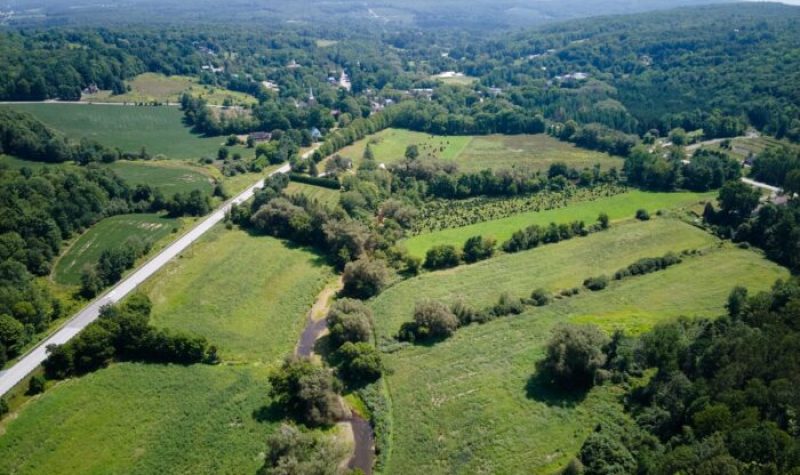The Nature Conservancy of Canada (NCC) – a non-profit organization that provides long-term protection of Canada’s natural areas for plant and wildlife with a headquarters in Montreal – has acquired 33 hectares of land from the Dwyer family in Frelighsburg, along the Pike River. The NCC will restore the land for its native species, which include the wood turtle, and encourage agricultural practices that will allow for a better cohabitation between the wildlife and the land’s agricultural producers.
“We were approached by a local group, which is Jean-Martin Fortier of Jardinier Maraîcher – he’s got a business going on – and Julie Bellefroid and Maude-Hélène Desroches – these two women are active in agricultural land – and also with Dura-Club Bellefroid is helping to improve the agricultural practices in the region,” explained Julien Poisson, program director for NCC and spokesperson for the project. “So, they were aware of that land and the intention of the family to let go of that land and they approached us to do the transaction.”
The NCC has three priority levels for the sites it protects and after referring to its scientific data it found the new acquired territory in Frelighsburg is of major importance.
“We found out that it’s quite rich in biodiversity. Since it is the habitat of the wood turtle we decided to do the project. This is a big system of prioritization so when we receive a phone call, we look if it’s prioritization one, two, or three, and this one was highly important,” said Poisson. “There is also a good habitat for birds, fish in the Pike River, and the wood turtle which is endangered.
Poisson explained that NCC will begin by focusing on slowing down the flow of the river.
“It’s a really low flood plain on that property so every spring we will do plantations to make sure the river can overflow on the property on vegetation and maybe over time we will see the river take its natural course. Right now, it is kind of rectified because it cannot overflow on each side - which is agricultural land – or it overflows on their soil which is not necessarily good for the river,” explained Poisson.
Poisson added that by planting vegetation and having more forested areas along the river it will naturally help repair the habitats of the native species that live in or alongside it.
“For example, if the river is clear and there is a good forested area in the close range of the river the wood turtle will use this part of the river. We see a sandy bottom, it’s shallow, it does overflow in the woods, so it’s perfect for the wood turtle. By restoring the freedom of space, we will be able to recreate the habitat of the wood turtle,” he said.
The project is also about encouraging farmers to take on agricultural practices that will help support the rejuvenation of the land; more particularly by transforming cropland into hay mowing.
“What I find interesting is the cohabitation. We did transform the agricultural part of the land. It was bare soil – it was corn – it was intensive agricultural practices, and this is not the place for these intensive practices,” explained Poisson. “We want to put the good practices to the good place. By allowing hay mowing on this land, we will maintain agricultural activity and we will ensure the reproduction of birds, turtles, and maybe even some fish.”
As an educational experience, the NCC will be collaborating with people from the local community and the elementary schools to help them on its project. Students will be helping with plantations along the river, surveillance of the property, and other activities like cleaning the shore of the Pike River. They also hope to get other farmers on board.
“This is the first project and hopefully we will be able to convince the neighbor that it’s a good thing to do what we do for the owners that are along the river. It’s their river, you can protect the river, so they need to take care of it. We want to give this example to the people around,” said Poisson.
Listen to the full interview with Julien Poisson below:


